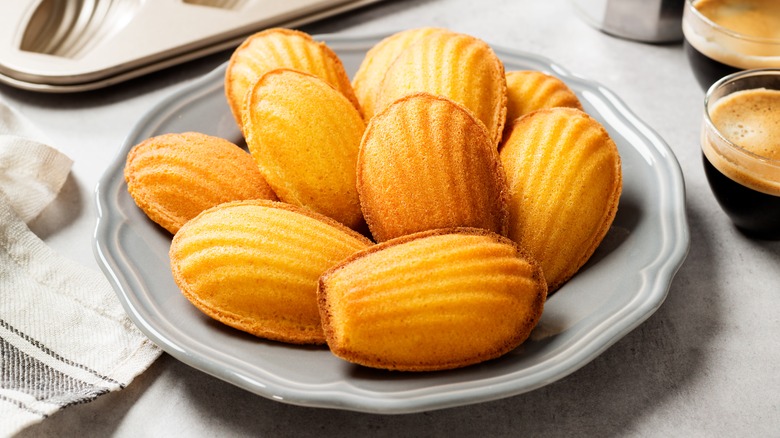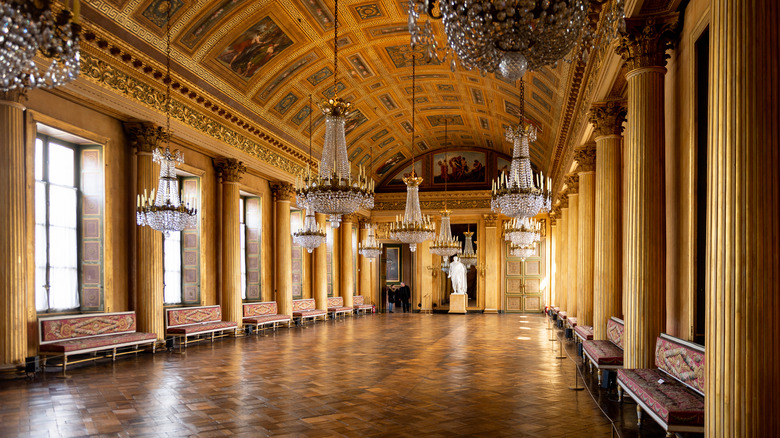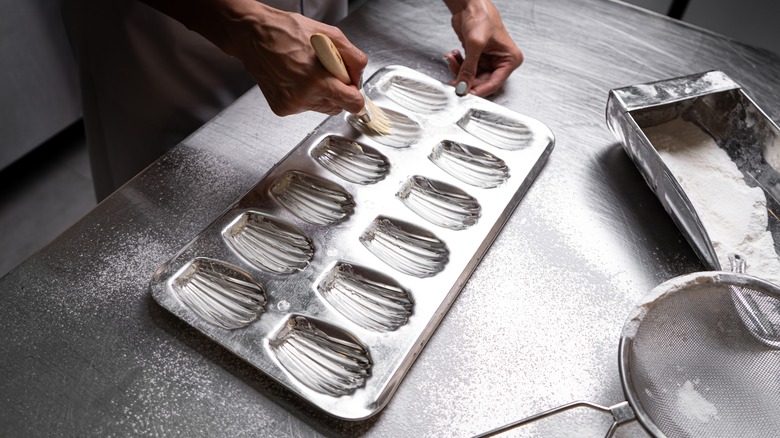The Small, Delectable French Cakes That Inspired Marcel Proust
Marcel Proust is considered one of the most significant and influential novelists of the 20th century, and also a quintessentially French one. His seven-volume masterwork, "In Search of Lost Time" (formerly translated as "Remembrance of Things Past"), is set in motion when a taste of tea-dipped cake releases a flood of memories. With these words, "I raised to my lips a spoonful of the tea in which I had soaked a morsel of the cake," Proust embarks on a reverie in "Swann's Way," the epic's first volume. The sweet fragment he refers to is a traditional madeleine, the delicate, ridged, scallop-shaped cake/cookie hybrid. The sweet and buttery bit reminds him of his mother; it also subsequently inspires the narrator to examine his childhood, French society, the power of memory, and the meaning of art, among other things.
According to Fine Dining Lovers, Proust was originally inspired in preliminary drafts of the novel by honey-covered toast and a biscotto, before settling on the madeleine. The phrase "memoires de Proust" has since become the French term for memories triggered by current stimuli, just as the taste of a madeleine evoked in the author a long-repressed childhood remembrance. Not only was the classic treat a muse for Proust, but his madeleine-inspired "In Search of Lost Time" became the longest novel ever published, per Mental Floss. So what's the story behind the iconic French madeleine?
The history of madeleines
The history of this dainty delicacy, so inextricably linked to Marcel Proust, is a bit murky. In the most widely accepted version reported by Culture Trip, madeleines date to 18th-century France and originated in the town of Commercy. The dessert was the creation of a kitchen servant named Madeleine Paulmier, who served the pastries to the Duke of Lorraine and his guests. The nobleman dubbed them madeleines, and France's King Louis XV and his wife so loved the gateaux she introduced them to the French court.
Per Grate Madeleine, the cookie/cake achieved widespread popularity in the 19th century as metal molds came into vogue. Madeleine recipes also began to appear in the cookbooks of the day. Legislation in 1874 permitted the sale of madeleines at train stations, to which Complete France attributes a surge in sales from Strasbourg to Paris. No longer limited to the upper classes, madeleines were embraced by all strata of French society.
Two other stories of madeleine's origins have gained traction. One postulates that the initial recipe was devised in Spain and brought back to the Lorraine district. A second, per What's Cooking America, credits Jean Avice, a pastry chef employed by statesman Prince Talleyrand in the 1800s. Whatever their source, madeleines delight today's diners from Commercy's cafes to Starbucks around the world.
Proust isn't the only one who loves madeleines
As Fine Dining Lovers notes, Marcel Proust's favorite butter cake has two signature characteristics: a scallop shape and pronounced ridges. A madeleine will taste the same with or without the bumps. The standard recipe calls for large eggs, unsalted butter, table salt, all-purpose flour, baking powder, granulated sugar, and vanilla extract or lemon zest. Popular flavor additives include chocolate, raspberry, almond extract, or honey.
A perfect madeleine will have a spongy and soft interior, contrasted with a brown and crispy exterior. Unpeeled Journal warns against over-baking due to their relatively minimal fat content. As most recipes generate two dozen of the beauties, having a pair of special madeleine pans is a good idea. According to the award-winning blog Joy of Baking, mini tart or muffin pans work just as well.
Many madeleine fans sing the praises of Parisian patisserie Blé Sucré, whose orange-glazed creations are themselves a variant of the standard recipe (via National Geographic). In contemporary France, madeleines are typically accompanied by a morning coffee or a welcome part of the traditional 4 o'clock teatime. Best when served fresh and warm, they can also be stored in an air-tight container for a few days, allowing one to share in Proust's "exquisite pleasure [that] invaded my senses."


